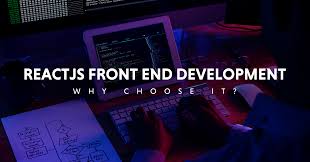The Ultimate Guide to SEO & Web Promotion: From Basics to Breakthroughs
Learn the powerful synergy between SEO and web promotion. This guide covers essential strategies to optimize your website for search engines and drive traffic, from on-page tactics to social media marketing and beyond.

In the vast and competitive digital landscape, having a great website is only half the battle. To truly succeed, you need a powerful combination of Search Engine Optimization (SEO) and Web Promotion. Many people view these two concepts as separate, but in reality, they are two sides of the same coin, working in harmony to build your online presence, attract your target audience, and drive business growth. This comprehensive guide will break down the essential components of each and show you how to create a cohesive strategy that puts your website on the path to digital dominance.
Understanding the Core: What is SEO?
SEO is the process of optimizing your website to rank higher in search engine results pages (SERPs) for relevant keywords. It's the technical and content-based foundation that makes your site "crawlable" and "understandable" to search engine bots like Google. A solid SEO strategy focuses on three main pillars:
-
On-Page SEO: This includes all the elements on your website that you can control to improve its ranking. Key factors include:
-
Keyword Research: Identifying the words and phrases your target audience uses to search for information, products, or services.
-
High-Quality Content: Creating informative, unique, and engaging content that provides real value to your readers and naturally incorporates your target keywords.
-
Title Tags and Meta Descriptions: Crafting compelling, keyword-rich titles and descriptions that entice users to click.
-
Header Tags (H1, H2, H3): Structuring your content with clear headings to improve readability and help search engines understand the hierarchy of your information.
-
Image Optimization: Using descriptive file names and alt text for images to improve accessibility and provide search engines with more context.
-
-
Technical SEO: This pillar deals with the technical aspects of your website that affect its visibility in search. It's about ensuring your site is fast, secure, and easy for search engines to crawl. Important technical elements include:
-
Site Speed: Optimizing your website's loading time to improve user experience and reduce bounce rates.
-
Mobile-Friendliness: Ensuring your site is fully responsive and provides a seamless experience for users on mobile devices.
-
Sitemap and Robots.txt: Providing search engines with a sitemap to guide their crawl and a robots.txt file to control which pages they can access.
-
Secure (HTTPS) Protocol: Using a secure connection to protect user data and boost your site's credibility.
-
-
Off-Page SEO: This refers to all the actions taken outside of your website to impact its rankings. The most crucial factor is Link Building, which involves acquiring high-quality backlinks from other reputable websites. These links act as "votes of confidence," signaling to search engines that your site is a trusted and authoritative source.
The Power of Promotion: Why Web Promotion Matters
While SEO lays the groundwork, web promotion is the active process of getting your website in front of your audience. It's the strategic effort to drive traffic and increase visibility through various marketing channels. Web promotion amplifies your SEO efforts and creates a holistic approach to online growth. Key promotion strategies include:
-
Content Marketing: Beyond just creating content for your site, this involves actively distributing it. Share your blog posts, articles, and videos across your social media channels, email newsletters, and relevant online communities.
-
Social Media Marketing: Build a strong presence on platforms where your target audience is active. Engage with your followers, share your content, and use social media to drive direct traffic back to your website.
-
Email Marketing: Cultivate an email list and send regular newsletters with links to your latest blog posts, updates, and special offers. Email is a direct and powerful way to bring a loyal audience back to your site.
-
Influencer Outreach and Collaboration: Partner with influencers or other industry leaders to promote your content to their established audiences. This can lead to valuable backlinks and a significant surge in traffic.
-
Online Directories and Forums: List your business in relevant online directories (like Yelp or industry-specific sites) and participate in forums and Q&A sites (like Reddit or Quora) to answer questions and subtly promote your expertise with links to your content where appropriate.
-
Paid Advertising: While SEO is a long-term organic strategy, paid ads on platforms like Google, Facebook, and LinkedIn can provide an immediate boost in traffic and visibility, especially for new content or special promotions.
The Synergy: SEO and Web Promotion Working Together
The true magic happens when you integrate SEO and web promotion. Web promotion strategies are not just for driving traffic; they also significantly contribute to your off-page SEO.
-
Sharing your high-quality, optimized blog posts on social media and through email can lead to more people seeing and linking to your content.
-
Guest posting on other blogs not only exposes your brand to a new audience but also provides a high-quality backlink, boosting your SEO.
-
Creating shareable visual content like infographics or videos can go viral, generating a flood of social signals and backlinks without a direct outreach effort.
In essence, SEO is the magnet that attracts search engines, and web promotion is the megaphone that tells the world your magnet is worth finding.
Conclusion: A Continuous Journey
SEO and web promotion are not one-time tasks. The digital world is constantly evolving, with search engine algorithms and marketing trends changing regularly. To stay ahead, you must treat your digital strategy as a continuous journey of optimization and promotion.
Start by building a strong SEO foundation, creating content that is both valuable to your audience and optimized for search engines. Then, use a multi-channel web promotion strategy to amplify your message, drive traffic, and earn the credibility that search engines value. By embracing this dynamic duo, you will not only improve your rankings but also build a sustainable and thriving online presence that converts visitors into loyal customers.




